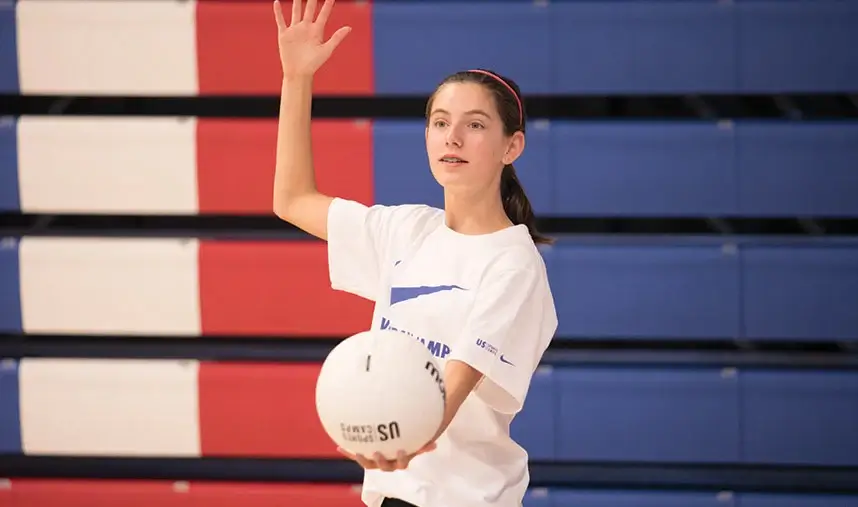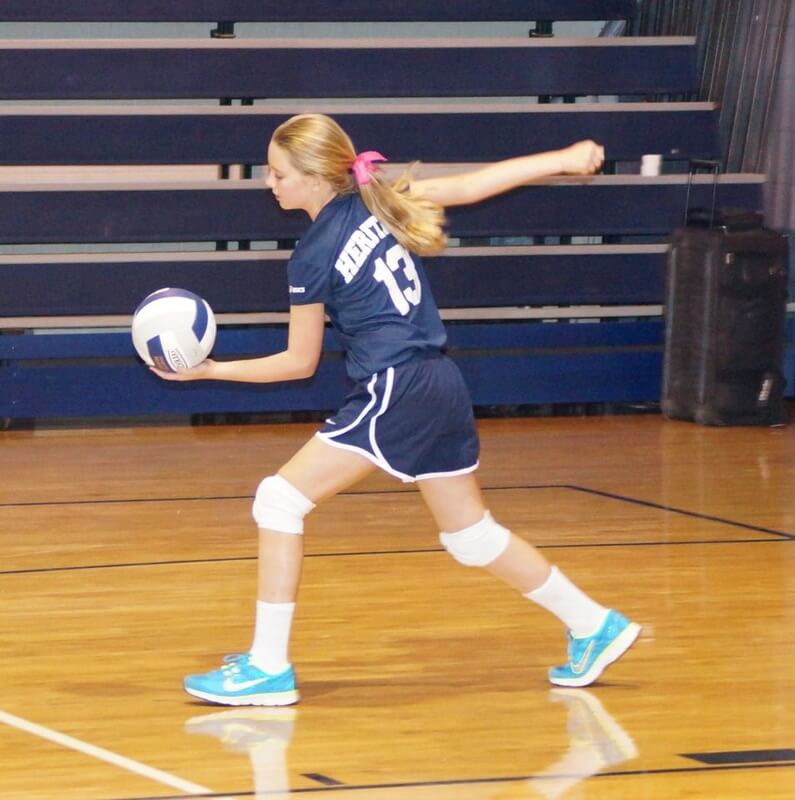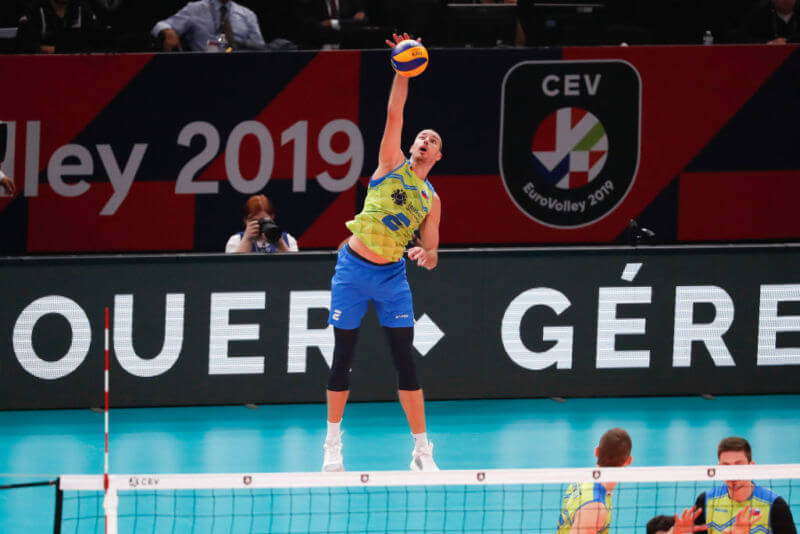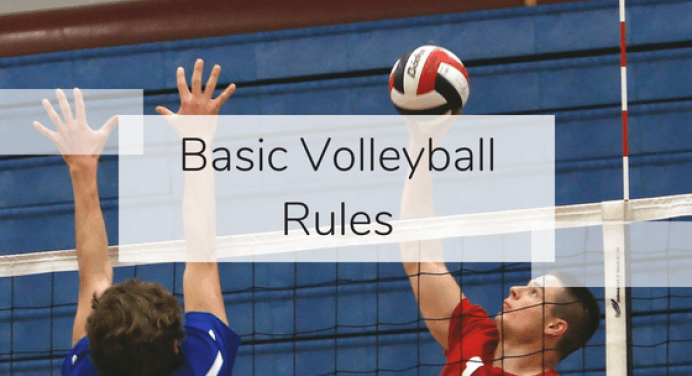Πώς να σερβίρεις το βόλεϊ(2023): Ολοκληρωμένος Οδηγός

Το βόλεϊ είναι ένα γρήγορο και συναρπαστικό άθλημα που απαιτεί συνδυασμό δεξιοτήτων, στρατηγικής και ομαδικής εργασίας. Μία από τις θεμελιώδεις πτυχές του παιχνιδιού είναι το σερβίρισμα. Ένα καλά εκτελεσμένο σερβίς μπορεί να δώσει στην ομάδα σας ένα πλεονέκτημα από την αρχή. Είτε είστε αρχάριος είτε θέλετε να βελτιώσετε την τεχνική του σερβιρίσματος, αυτός ο οδηγός θα σας καθοδηγήσει στα βήματα σχετικά με το Πώς να σερβίρετε μια μπάλα βόλεϊ .
Το σερβίς είναι η μόνη ικανότητα στο βόλεϊ όπου έχεις τον απόλυτο έλεγχο του παιχνιδιού. Είναι η πρώτη επαφή που κάνεις με την μπάλα και μπορεί να δώσει τον τόνο για ολόκληρο το ράλι. Είτε παίζετε ψυχαγωγικά είτε ανταγωνιστικά, ένα δυνατό σερβίς μπορεί να δημιουργήσει δυσκολίες στην αντίπαλη ομάδα και να προσφέρει στην ομάδα σας ένα στρατηγικό πλεονέκτημα.
Πώς να σερβίρετε μια μπάλα βόλεϊ;
Το σερβίς είναι η μόνη ικανότητα στο βόλεϊ όπου έχεις τον απόλυτο έλεγχο του παιχνιδιού. Είναι η πρώτη επαφή που κάνεις με την μπάλα και μπορεί να δώσει τον τόνο για ολόκληρο το ράλι. Είτε παίζετε ψυχαγωγικά είτε ανταγωνιστικά, ένα δυνατό σερβίς μπορεί να δημιουργήσει δυσκολίες στην αντίπαλη ομάδα και να προσφέρει στην ομάδα σας ένα στρατηγικό πλεονέκτημα.
Ακολουθούν τα βήματα για το πώς να σερβίρετε μια μπάλα βόλεϊ χρησιμοποιώντας το σερβίς με το χέρι:
Εδώ είναι μερικά κοινά λάθη που πρέπει να αποφύγετε όταν σερβίρετε μια μπάλα βόλεϊ:
Το overhand σερβίς είναι ο πιο κοινός τύπος σερβίς στο βόλεϊ. Είναι ένα ευέλικτο σερβίς που μπορεί να χρησιμοποιηθεί για να χτυπήσει την μπάλα δυνατά, μαλακά ή με περιστροφή. Με την εξάσκηση, μπορείτε να μάθετε να σερβίρετε την μπάλα με ακρίβεια και συνέπεια.
Ακολουθούν μερικοί άλλοι τύποι σερβίς βόλεϊ:
Το είδος του σερβίς που θα επιλέξετε θα εξαρτηθεί από το επίπεδο δεξιοτήτων σας και την κατάσταση στο παιχνίδι. Εάν είστε αρχάριοι, το υπαίθριο σερβίρισμα είναι ένα καλό μέρος για να ξεκινήσετε. Καθώς γίνεστε πιο επιδέξιοι, μπορείτε να δοκιμάσετε άλλους τύπους σερβιρίσματος, όπως το κυμαινόμενο σερβίς ή το σερβίς με το topspin.
Τύποι σερβιρίσματος
Overhand Serve
Το overhand σερβίς είναι ο πιο κοινός τύπος σερβίς που χρησιμοποιείται στο βόλεϊ. Προσφέρει καλύτερο έλεγχο και ισχύ σε σύγκριση με το υπαίθριο σερβίς.

Ακολουθούν μερικές συμβουλές για ένα καλό σερβίς:
Υπόχειρο σερβίρισμα
Το κρυφό σερβίρισμα είναι ένα βασικό σερβίς που χρησιμοποιείται συχνά από αρχάριους. Αν και είναι λιγότερο ισχυρό, είναι ένα καλό σημείο εκκίνησης για την εκμάθηση της μηχανικής εξυπηρέτησης.

Για να εκτελέσετε ένα κρυφό σερβίς, ακολουθήστε τα εξής βήματα:
- Σταθείτε με τα πόδια ανοιχτά στο πλάτος των ώμων και το κυρίαρχο πόδι ελαφρώς μπροστά από το μη κυρίαρχο πόδι σας.
- Κρατήστε την μπάλα στο μη κυρίαρχο χέρι σας στο ύψος της μέσης.
- Λυγίστε τα γόνατά σας και γυρίστε το κυρίαρχο χέρι σας πίσω πίσω σας.
- Φέρτε το κυρίαρχο χέρι σας μπροστά και χτυπήστε την μπάλα με την παλάμη του χεριού σας.
- Χτυπήστε την μπάλα ακριβώς κάτω από το κέντρο έτσι ώστε να ακολουθήσει μια ανοδική τροχιά πάνω από το φιλέ.
Ακολουθούν μερικές συμβουλές για την εκτέλεση ενός κρυφού σερβίς:
Σερβίρισμα μετάβασης
Το άλμα σερβίς είναι μια προηγμένη τεχνική που περιλαμβάνει το άλμα πριν την επαφή με την μπάλα. Απαιτεί χρόνο, δύναμη και ακρίβεια.

Ακολουθούν μερικές συμβουλές για να μάθετε το σερβίς άλματος:
Προετοιμασία και στάση | Πώς να σερβίρετε μια μπάλα βόλεϊ
Τοποθέτηση ποδιών
Τοποθετήστε τον εαυτό σας πίσω από τη γραμμή σερβιρίσματος με το ένα πόδι ελαφρώς μπροστά. Αυτό παρέχει σταθερότητα και επιτρέπει τη σωστή μεταφορά βάρους κατά το σερβίρισμα.
Θέση σώματος
Σταθείτε στο πλάι στο δίχτυ με τον μη κυρίαρχο ώμο σας στραμμένο προς το γήπεδο. Αυτή η στάση επιτρέπει τη βέλτιστη περιστροφή του σώματος κατά τη διάρκεια του σερβίς.
Μηχανικοί Υπηρεσιών
Πετώντας την μπάλα
Πετάξτε τη μπάλα αρκετά ψηλά για να εκτελέσετε άνετα το σερβίς που έχετε επιλέξει. Η εκτίναξη πρέπει να είναι συνεπής για να διασφαλίζεται ο ακριβής χρονισμός και η επαφή.
Επαφή με την μπάλα
Για σερβίς με overhand και jump, βάλτε στόχο να έρθετε σε επαφή με την μπάλα στο υψηλότερο σημείο της εμβέλειάς σας. Αυτό μεγιστοποιεί την ισχύ και τον έλεγχο.
Topspin και Float σερβίρει
Τα σερβίς Topspin περιλαμβάνουν την εφαρμογή περιστροφής προς τα εμπρός στην μπάλα, με αποτέλεσμα να πέφτει πιο γρήγορα και να κινείται απρόβλεπτα. Τα σερβίς Float, από την άλλη πλευρά, έχουν ελάχιστο γύρισμα και μπορεί να μπερδέψουν τους δέκτες.
Ανάπτυξη ισχύος και ακρίβειας
Δύναμη πυρήνα
Ένας ισχυρός πυρήνας συμβάλλει σε ένα ισχυρό και σταθερό σερβίς. Ενσωματώστε βασικές ασκήσεις στη ρουτίνα προπόνησής σας.
Κούνια βραχίονα
Η κίνηση της αιώρησης του χεριού σας παράγει δύναμη στο σερβίς σας. Εξασκηθείτε στη σωστή κίνηση του βραχίονα για να βελτιστοποιήσετε την ταχύτητα και την ακρίβεια του σέρβις σας.
Mastering το Jump Serve
Το σερβίς άλματος συνδυάζει δύναμη και ακρίβεια. Αναπτύξτε τον χρονισμό του άλματος και εξασκηθείτε στον συντονισμό της προσέγγισης, του άλματος και της αιώρησής σας.
Στρατηγικές για την εξυπηρέτηση της επιτυχίας
Στόχευση
Στοχεύστε τα σερβίς σας σε συγκεκριμένες ζώνες στο γήπεδο του αντιπάλου για να εκμεταλλευτείτε τις αδυναμίες του και να διαταράξετε τις επιθετικές στρατηγικές του.
Αλλαγή ταχυτήτων
Αλλάξτε την ταχύτητα του σερβίς σας για να κρατήσετε τους αντιπάλους εκτός ισορροπίας. Η γρήγορη και αργή ανάμειξη καθιστά δύσκολη την πρόβλεψη των δεκτών.
Η αντιμετώπιση των νεύρων
Η νευρικότητα είναι κοινή, αλλά η ελεγχόμενη αναπνοή και η θετική οπτικοποίηση μπορούν να σας βοηθήσουν να ηρεμήσετε τα νεύρα σας και να διατηρήσετε την εστίαση.
Εξάσκηση αποτελεσματικά
Ατομική εξάσκηση
Επεξεργαστείτε την τεχνική και τη συνέπειά σας μέσω ασκήσεων σόλο σερβιρίσματος. Επικεντρωθείτε στο πέταγμα, στο πόδι και στην επαφή.
Πρακτική συνεργάτη
Εξασκηθείτε με έναν συνεργάτη για να προσομοιώσετε καταστάσεις παιχνιδιού. Λάβετε σχόλια για τις υπηρεσίες σας και προσαρμοστείτε σε διαφορετικά στυλ λήψης.
Συνήθη λάθη προς αποφυγή
Βλάβες ποδιών
Βεβαιωθείτε ότι το πόδι σας δεν αγγίζει ή δεν περνάει πάνω από τη γραμμή σερβιρίσματος κατά το σερβίρισμα. Τα σφάλματα στα πόδια οδηγούν σε σφάλματα σέρβις.
Σφάλματα σέρβις
Αποφύγετε να χτυπήσετε την μπάλα στα δίχτυα ή εκτός ορίων. Εξασκηθείτε στον έλεγχο και τη συνέπεια για να ελαχιστοποιήσετε τα λάθη.
Χτίζοντας ψυχική ανθεκτικότητα
Μείνετε θετικοί και συγκεντρωμένοι, ακόμα και μετά από ένα χαμένο σερβίς. Η ψυχική σκληρότητα είναι ζωτικής σημασίας για τη διατήρηση της αυτοπεποίθησής σας στο σερβίρισμα.
Σημασία συνέπειας
Η συνέπεια είναι το κλειδί για να γίνεις αξιόπιστος διακομιστής. Η τακτική εξάσκηση και η αφοσίωση θα οδηγήσουν σε βελτιωμένη απόδοση με την πάροδο του χρόνου.
Συμπέρασμα – Πώς να σερβίρετε μια μπάλα βόλεϊ
Το σερβίς είναι μια κρίσιμη δεξιότητα στο βόλεϊ που μπορεί να επηρεάσει σημαντικά το αποτέλεσμα ενός αγώνα. Κατακτώντας διάφορες τεχνικές σερβιρίσματος, κατανοώντας τις στρατηγικές και εξασκώντας με συνέπεια, μπορείτε να γίνετε ένας τρομερός διακομιστής και να συμβάλετε στην επιτυχία της ομάδας σας. Σε αυτό το άρθρο θα περιγράψουμε εν συντομία Πώς να σερβίρετε μια μπάλα βόλεϊ.
Συχνές ερωτήσεις
- Ε: Πώς μπορώ να ξεπεράσω τον φόβο να υπηρετήσω;
- Ασκηθείτε με συνέπεια και επικεντρωθείτε στη σωστή τεχνική. Όσο περισσότερη αυτοπεποίθηση γίνετε για τις ικανότητές σας, τόσο λιγότερο φόβο θα βιώσετε.
- Ε: Μπορώ να αλλάξω το στυλ σερβιρίσματος μου;
- Α: Απολύτως! Πειραματιστείτε με διαφορετικούς τύπους σερβίς για να βρείτε το στυλ που σας ταιριάζει καλύτερα και κάνει τους αντιπάλους σας να μαντεύουν.
- Ε: Είναι το σερβίς άλματος κατάλληλο για αρχάριους;
- Το σερβίς άλματος είναι πιο προχωρημένο και απαιτεί εξάσκηση. Συνιστάται για παίκτες με καλή αντίληψη των βασικών σερβίς.
- Ε: Πώς μπορώ να βελτιώσω την ακρίβεια των σερβίς μου;
- Α: Εργαστείτε για τη συνοχή της εκτίναξής σας και επικεντρωθείτε στην επαφή με την μπάλα στο υψηλότερο σημείο που έχετε πρόσβαση.
- Ε: Τι γίνεται αν οι σερβίς μου είναι πάντα πολύ σύντομες;
- Α: Ρυθμίστε την εκτίναξή σας ώστε να είναι ελαφρώς υψηλότερη και εστιάστε σε μια πιο ανοδική ταλάντευση για να δημιουργήσετε την απαραίτητη ισχύ και απόσταση.






